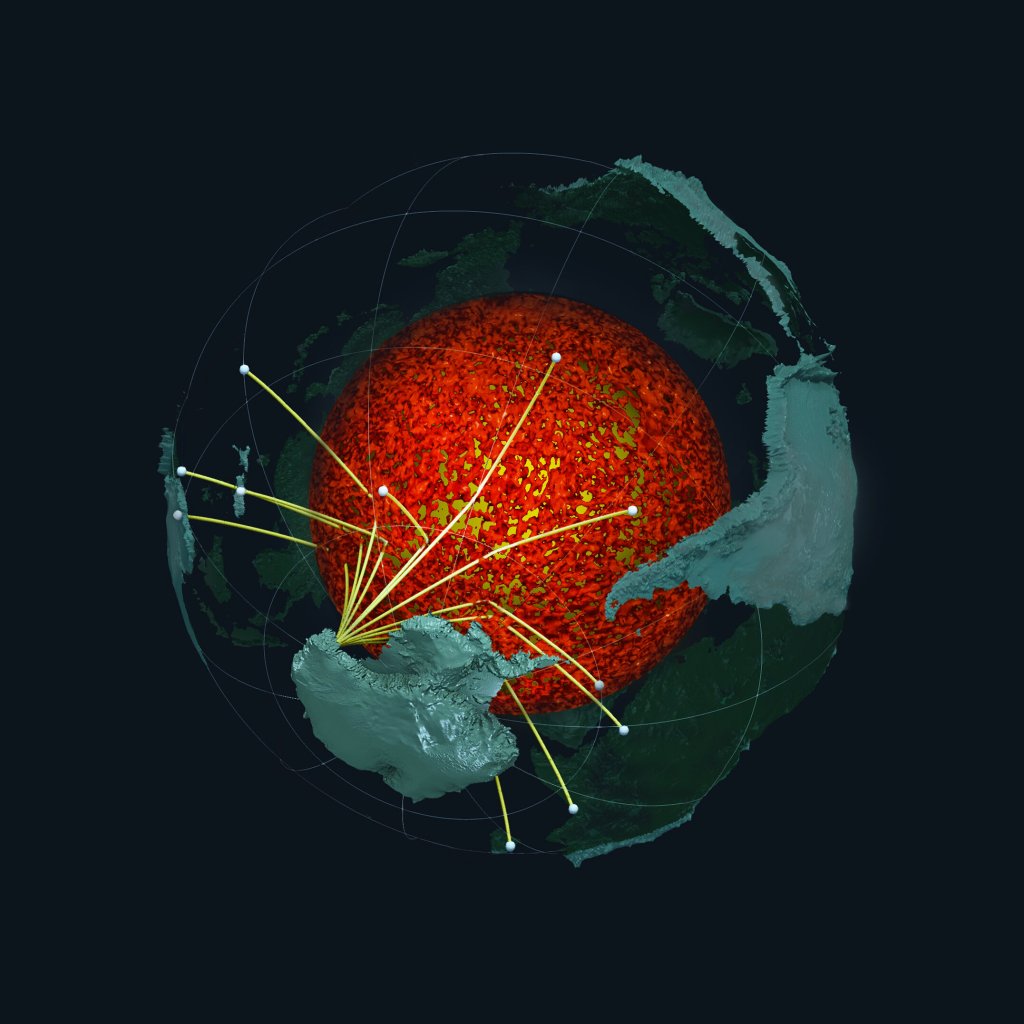Scientists think they may have solved the mystery of how helium-3, a rare element that has attracted interest as a potential fuel source for nuclear fusion reactors, is leaking out of Earth’s core, reports a new study.
The research proposes that this ancient substance seeps from the core into the planet’s outer layers, the mantle and crust, as a result of reactions with magnesium oxide. The discovery could help probe Earth’s mysterious innermost regions, and has implications for understanding how life emerged on Earth and whether it might exist elsewhere in the universe.
Videos by VICE
Helium-3 is a version (or isotope) of the element helium that only has one neutron in its nucleus instead of two. Most helium-3 was formed shortly after the Big Bang, making it barely younger than the universe itself. In addition to this primordial origin, helium-3 is a hot topic for scientists working on nuclear fusion, a speculative form of energy that could provide virtually limitless clean power, because its properties make it a promising fuel source for fusion reactions. For that reason, scientists are investigating how to harness helium-3 that may be trapped on the Moon, for example.
When Earth began to coalesce from gas and dust some 4.5 billion years ago, primordial helium-3 was baked into the mix. As a result, large reservoirs of the isotope ended up locked into the planet’s core, which sits about 1,800 miles under our feet. Helium-3 is extremely scarce on Earth’s surface, but traces of it can be found in volcanic rocks in the ocean, suggesting that some unknown mechanism is allowing gas to escape the core.
Now, a pair of scientists have suggested that a mineral called magnesium oxide (MgO), which is common in Earth’s core, may be helping to smuggle helium-3 upward from the core into the mantle, and beyond, due to a process called exsolution that transforms uniform minerals into multiple “demixed” phases. The research stemmed in part from previous work exploring how the element tungsten was seeping out of the core.
In addition to shedding light on the “important but largely unexplored question” of helium-3’s movements through Earth, the results offer “a pathway for probing core processes” that could help reveal how Earth first became hospitable to life, the study, published on Thursday in Nature Geoscience, reports.
“How tungsten and helium leak from the core to the mantle is unknown,” said Jie Deng, a geophysicist at Princeton University who led the new study, in an email to Motherboard. “None of the existing models of core leaking (or more scientifically core-mantle interaction) seem to explain the geochemical data satisfactorily. We thus try to find a new mechanism.”
Deng and his co-author Zhixue Du, a researcher at the Guangzhou Institute of Geochemistry, are not the first scientists to realize that magnesium compounds in Earth’s core may play a major role in a host of important processes that affect life here on the surface.
For instance, previous studies have suggested that the upward buoyant motion of MgO through the core has helped to power Earth’s geodynamo over the past several billion years, which generates the planet’s magnetic field. This field protects us from harmful radiation and stabilizes the atmosphere that we depend on for life support, which makes it a keystone of Earth’s capacity to host life.
As MgO floats up to the boundary between the liquid outer core and the mantle, where temperatures are slightly lower than in the core, it “exsolves,” which means it transforms from a homgenous mineral into separate crystalline phases. MgO pulls helium-3 with it from the well-mixed liquid iron core toward the core-mantle boundary, where the exsolution process carries both substances into the mantle.
“We find that when MgO exsolves from the iron [in the core], it is not actually pure MgO, Deng explained. “It likes to bring with it other elements, for example, helium. So MgO exoslution serves as a capsule packing helium from the core and transporting helium into the mantle.”
“We also modeled the expected helium flux due to magnesium oxide exsolution since core formation, showing that magnesium oxide exsolved from the core may have continuously supplied helium from the core into the mantle throughout much of Earth’s history, imprinting its primordial helium signature into the mantle materials,” the researchers noted in the study.
While the team said that more research is needed to understand these murky processes, the new study adds a new piece to the puzzle of Earth’s core, the most remote region of our world.
“Earth’s core is still largely enigmatic,” Deng said. “There are many unanswered questions, for instance, the composition of Earth’s core, the energetics of an early geodynamo, etc. Paleomagetic evidence shows that we know that Earth’s core is not pure iron. There must be other minor light elements, and all kinds of trace elements. What are those elements? Understanding these may help improve our understanding of the Earth’s formation model.”
In addition, Deng and Du suggested that the exsolution of minerals from the core may enrich the mantle and crust with a variety of other elements, including the ingredients that led to life on Earth.
“MgO exsolution, along with other core exsolution, are significant core-mantle mass interaction mechanisms,” Deng said. “The chemical exchange of the core and mantle may have profound effects on the long-term evolution of the mantle and Earth’s as a whole.”
“The link to the emergence of life may be tenuous, but the core is also a significant reservoir of water and carbon,” he concluded. “Exoslutions from the core may transport these elements from the core to the mantle as well, which may impact the water and carbon cycle of the mantle.”
Update: This article has been updated to include comments from study author Jie Deng.




